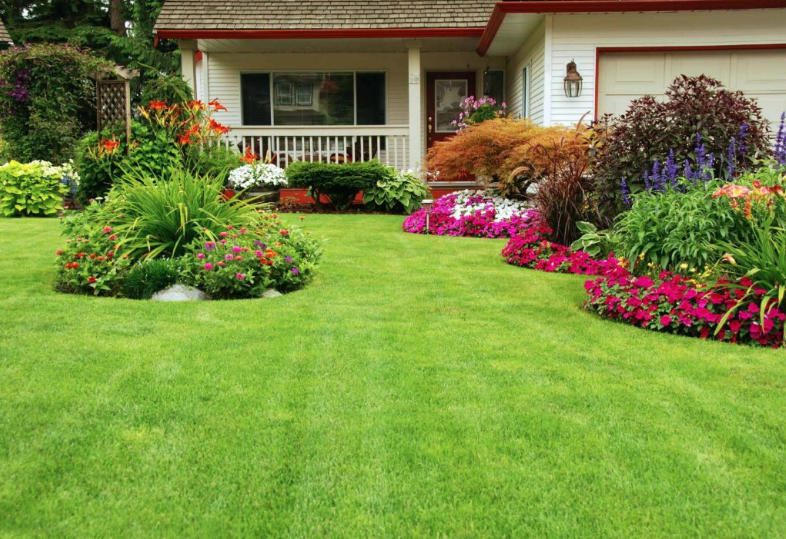What’s the Secret to the Perfect Lawn?

Are you longing for a lush green lawn? Here are some tips on how to get your lawn looking like a golf course!

Photos By: Unsplash
The secret to a perfect lawn isn’t really a secret. It’s a combination of choosing the right grass species for the property and knowing the right way to water, fertilize and mow your lawn to protect it from diseases and feasting pests. Striving for a perfectly-manicured lawn? Hoping your front yard will stand as a symbol of pristine lawn care and the envy of all neighbors? Here’s how you can achieve that vibrant green, patch-free lawn.
Choosing the Right Grass
A lawn owner has the choice of plugs, sod, and seed for their lawn. Some grasses are hybrids and can’t be grown from seed. However, there are many other types of grass that can be grown from seed, which is a less-expensive option when compared to sod or plugs and is much easier to install. When you’re shopping for grass seed, avoid the cheap options that are stuffed into displays and sold out of big box stores or even hardware stores. When it comes to grass seed, a yard owner should consult a lawn care professional. Even before it’s time to buy seed, a homeowner should conduct their own research. Anyone hoping to achieve the perfect lawn will need to find a type of grass that thrives in their regional climate and evaluate whether or not it’s a cold season or warm-season grass. A homeowner should also understand how much care a given type of grass will require. Some grass demands routine watering and fertilizing to stay lush and green, while other types of grass don’t need intensive care once they’re established. Other factors you, as the homeowner, should consider when choosing the right grass for their lawn include how much traffic does your lawn experience? Do you have pets and young kids who will play on the grass? You should also verify that the grass is drought, cold, and heat tolerant. If you want the grass to grow beneath the trees on the property, you’ll also need to know if the grass is shade tolerant. Most turfgrass isn’t, but there are varieties that can tolerate shade better than most. You might want to install artificial grass as an alternative since it’s durable and needs little maintenance.

Having the Right Soil
A lawn owner can purchase the highest quality seed they can afford, but if the soil is of poor quality, the lawn won’t be what it should be. The soil for a new lawn should be revived with nutrients found in humus and compost, and its pH will need to be checked. Grass, like many plants, prefers soil on the acidic side, which would translate to a pH just below 7.0. Though sowing seed is easier than rolling out sod and planting one plug at a time in the yard, it’s still work. For successful execution, the trick is to overseed or sow more seed than is recommended on the bag, as not every grass seed will sprout. Be sure to sow cool-season grasses in the spring or early autumn, while warm-season grasses should be sown early in the summer. Different spreaders are best suited for different types of grass seed, so the owner should confirm that they have the right spreader. When sowing seeds, it’s best to start at the perimeter of the property, then maneuver the spreader around like you’re mowing the lawn. After that, the seeds and fertilizer should be covered with a layer of soil, no more than 1/4 inch thick. Some homeowners will add straw to mulch the new lawn. After the seed has been sown, water the lawn until the soil is moist to the depth of one inch. This may mean turning on the sprinkler for 1-2 hours per day until the seeds start to sprout. Once the seed has sprouted, the top 3 inches of the soil should stay moist until the grass is tall enough to mow. This is about 3 inches. When the grass reaches that height, make sure that the soil is watered to 4 to 8 inches deep once or twice a week, depending on the weather. Whatever you do, don’t water a lawn after the sun sets.

Mowing Frequently
Though the lawn may be ready to mow when the grass blades are about 3 inches high, it’s best to hold off on mowing until it extends beyond that three-inch mark, since the roots of taller grass penetrate the soil to a greater depth. When it’s finally time to mow, the mower’s blade must be sharp to avoid crushing the grass. The lawnmower should take no more than 1/3 off the top of the grass blade.
Applying the Right Fertilizer
After the grass is established, it should be fertilized every month during the growing season. Though, there are some exceptions. Your lawn shouldn’t be fed when it’s dormant or during a drought.

Keeping Weeds at Bay
Weeds like to grow around the same time as the grass, so it’s wise to address weeds before they even emerge. This is the job of a pre-emergent herbicide, which is applied in very late winter or very early spring. There are herbicides target broad-leafed and fine leafed weeds, keeping your turfgrass in top condition. If you’re hoping to avoid herbicides, another method to control weeds is to simply uproot them when they first sprout.
Evicting Pests From Your Lawn
Pests tend to make an appearance around the same time as weeds. A healthy lawn is its own ecosystem, so there will be beneficial bugs that exist to prey on undesirable bug species. You can support beneficial insects by introducing more beneficial organisms such as grub-killing milky spore and nematodes to your yard or garden. With the right pest-control strategies, your perfect lawn is just within reach.







Leave a Comment